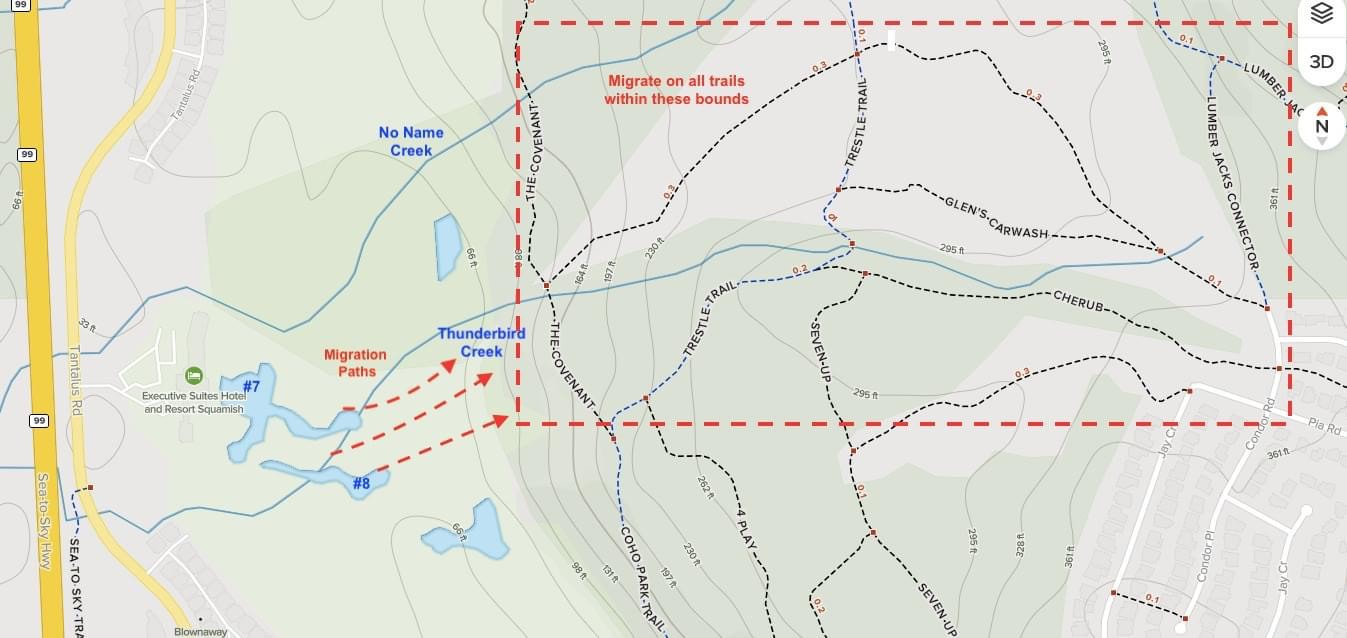Creature Feature - June 2023
Western Toad (Anaxyrus boreas)
Watch your step! Today is the summer solstice and the young Western toads, known as toadlets, are preparing for their migration from breeding ponds into terrestrial forest lands.
The Western toad occupies three distinct habitats throughout their lifetime: aquatic breeding grounds, terrestrial summer ranges, and winter hibernation sites. Breeding adults migrate in spring, moving from land-dwelling regions to communal breeding sites situated in wetlands, ponds and lakes. The breeding occurs within a two week span. Once laid, eggs quickly develop into tadpoles, forming swarms of hundreds or thousands of individuals. The tadpoles navigate through the warmest and shallowest water available until they develop into toadlets and venture away from the aquatic environment. At this time (our present time!), dense aggregations of toadlets are often found hidden along the shores of breeding ponds, or clustered in piles when the weather turns cool.
Following the breeding season, the adult Western toads disperse into terrestrial habitats. They spend the rest of the summer and fall foraging in warmer, low-lying regions. As winter approaches, they seek refuge in burrows below the frost line, up to 1.3 meters underground, where they hibernate.
The Squamish area sustains a relatively large and thriving Western toad population. Please remember to be mindful of toadlets while traversing trails and roads during their migration in the next couple of weeks. The following areas would be best avoided in the incoming weeks: Garibaldi Springs and Garibaldi Highlands (see map below provided by the Squamish Environment Society).
The Western toad is considered a species of concern at the federal level. The Squamish Environment Society and BC Parks actively monitor the population and encourage local residents to participate in citizen science initiatives. The projects aims to better understand factors that affect breeding timing and success, so we can mitigate human impact.
Please visit Squamish Environment Society instagram and website to learn more about the Western Toad Monitoring Project. To get involved, please email [email protected].
The Western toad occupies three distinct habitats throughout their lifetime: aquatic breeding grounds, terrestrial summer ranges, and winter hibernation sites. Breeding adults migrate in spring, moving from land-dwelling regions to communal breeding sites situated in wetlands, ponds and lakes. The breeding occurs within a two week span. Once laid, eggs quickly develop into tadpoles, forming swarms of hundreds or thousands of individuals. The tadpoles navigate through the warmest and shallowest water available until they develop into toadlets and venture away from the aquatic environment. At this time (our present time!), dense aggregations of toadlets are often found hidden along the shores of breeding ponds, or clustered in piles when the weather turns cool.
Following the breeding season, the adult Western toads disperse into terrestrial habitats. They spend the rest of the summer and fall foraging in warmer, low-lying regions. As winter approaches, they seek refuge in burrows below the frost line, up to 1.3 meters underground, where they hibernate.
The Squamish area sustains a relatively large and thriving Western toad population. Please remember to be mindful of toadlets while traversing trails and roads during their migration in the next couple of weeks. The following areas would be best avoided in the incoming weeks: Garibaldi Springs and Garibaldi Highlands (see map below provided by the Squamish Environment Society).
The Western toad is considered a species of concern at the federal level. The Squamish Environment Society and BC Parks actively monitor the population and encourage local residents to participate in citizen science initiatives. The projects aims to better understand factors that affect breeding timing and success, so we can mitigate human impact.
Please visit Squamish Environment Society instagram and website to learn more about the Western Toad Monitoring Project. To get involved, please email [email protected].


